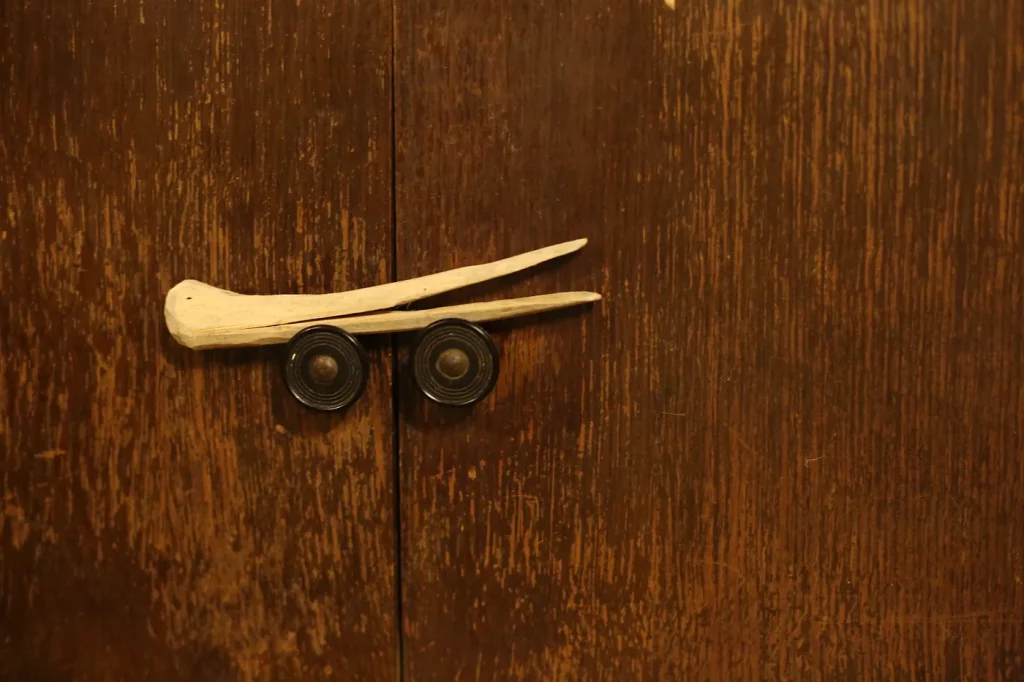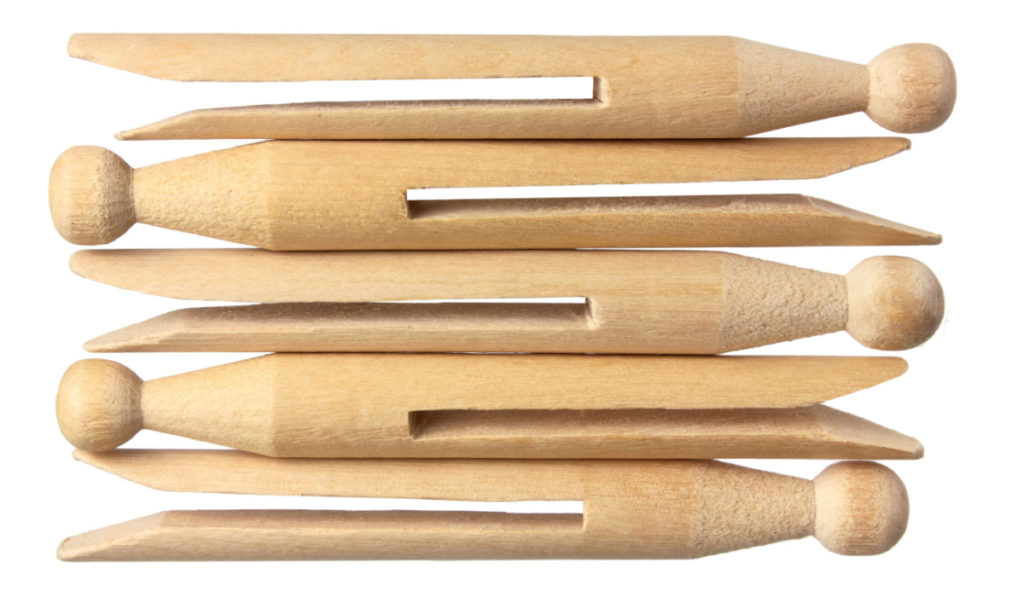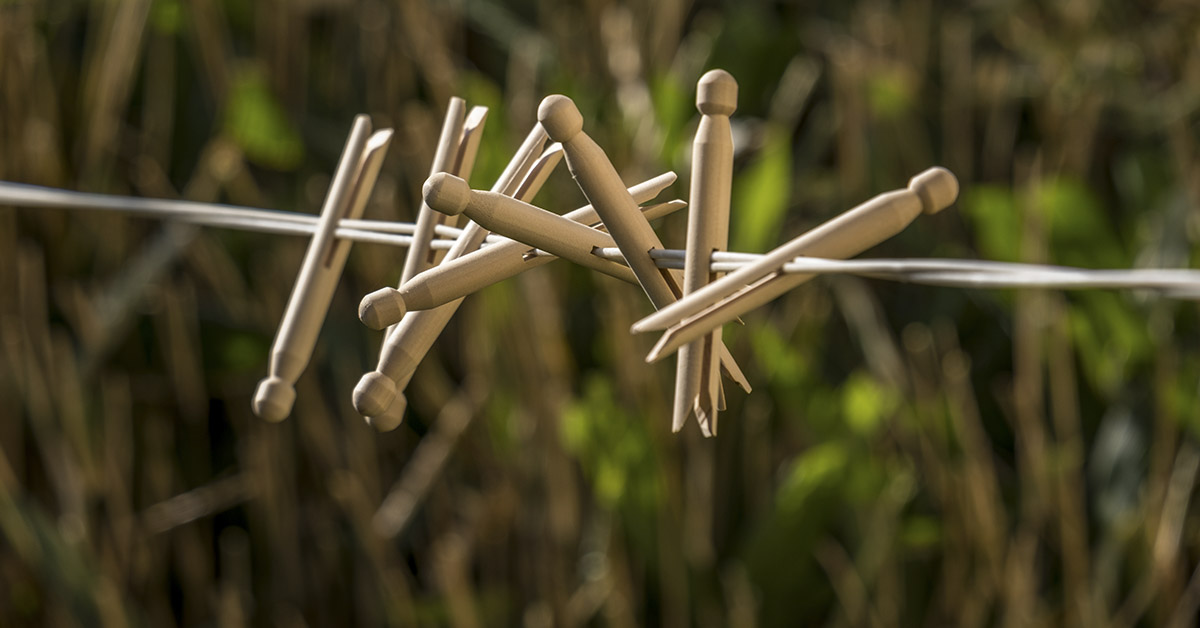Like many things in life, things change, including how we do laundry; people once washed their clothes in the river and then draped them over a line to dry. Then, machines like washboards laid the foundation for the washing and drying machines we use today. An important part of the laundry process before machines included dolly pegs, or what we would now call clothes pins. Simplistic, yet incredibly useful.
Dolly Pegs Gain Popularity

The earliest examples of clothespins, also called dolly pegs, were found in the U.S. in 1832. Samuel Pryor from Salem, New Jersey, patented the design but sadly lost his model in a fire four years later. Less than a decade after the patent office caught fire, dolly pegs made a comeback and were being mass-produced by the late 1840s. In 1887, Solon E. Moore patented clothespins with a “coiled fulcrum” of wire, revolutionizing the original design of dolly pegs. By the late 1900s, 500,000 board feet of lumber per year were harvested to make more than 20,000 dolly pegs daily.
On the other hand, various clothespins have been found in ancient Egyptian tombs, proving that the tool may have been around for centuries. On the other hand, actual evidence that these tools served the purpose of hanging clothes, seemingly wasn’t recorded until the early 19th century. Some have attributed the invention of the clothespin to fishermen, who supposedly used them to “clip their nets to the rigging.” But only one fisherman’s name has been recorded regarding a patent, Jérémie Victor Opdebec, in 1809.
Read More: Does Anyone Still Air Dry Their Laundry?
Dolly Pegs are Surprisingly Versatile
While most people opt to use dolly pegs for laundry, they have served numerous other purposes, including the reason they’re often referred to as dolly pegs. In addition to assisting with laundry, the clothespin has been used by gypsies, both as a form of currency and as a focal piece of their “lucky charms.” They’ve also been used for things like keeping bags of food fresh, keeping tablecloths flat, to hold lit matches, and as an effective method for getting more out of a tube of toothpaste. Furthermore, a dolly peg was reportedly used to prevent Charles Dickens from biting his tongue during a seizure.

Lastly, the transformation from clothespin to dolly peg occurred in the early 1900s. Young girls would often paint the clothespins into little dolls, with faces and colorful clothing that matched early 1900’s fashion. They’re still a cute and decorative item of today and make a great rainy-day activity for families looking to spend the afternoon away from electronics. Furthermore, dolly pegs are versatile, so crafting options are practically endless.
Read More: Grandma’s Rules for Hanging Out the Laundry
Making Another Comeback
Typically, clothespins are made of wood, and have a rounded top and “body” carved from the same piece of wood. However, Britain had a 2-piece design that called for the use of willow and hazel wood. Meanwhile, the U.S. used Ash and Beech wood. Alternatively, they have also made of plastic, including a model called Peggy, the first “smart” clothespin. It emerged on the market a few years before the pandemic hit and completely reimagined the conveniences of modern-day laundry. The “smart” clothespin, or dolly peg, sends notifications to the user’s smartphone, detecting things like when rain is predicted. Or the laundry has finished drying.
Although dolly pegs aren’t nearly as popular as they once were, a 2007 report regarding sales in the UK shows that these items are increasing in popularity again. The report reflected a 1,400% increase in sales for the first four months of 2007. The reports also showed there was a decrease in plastic sales. Most likely because these products would degrade in the sun. As a result, consumers prefer wood products, seemingly stepping back in time.
Clothespins, or dolly pegs, take little time to make, even by hand. They’re cut into shape, removing the interior sap, then set out to dry overnight.
Dolly pegs, like the other tools and methods used for laundry, have transformed over the centuries, including their ability to serve more than just the purpose of drying laundry.
Read More: 16 Items In Your Home You Should Be Cleaning Every Single Month
Sources
- “Wooden pegs, C47 or a clothespin.” Heritage and History.
- “The curious history of the clothespeg.” Medium. December 22, 2016.
- “If these Clothespins could Talk.” Raising Jane. MaryJane. May 6, 2013.
- “Who Made that Clothespin?” NY Times. Hilary Greenbaum and Charles Wilson. May 11, 2012.

